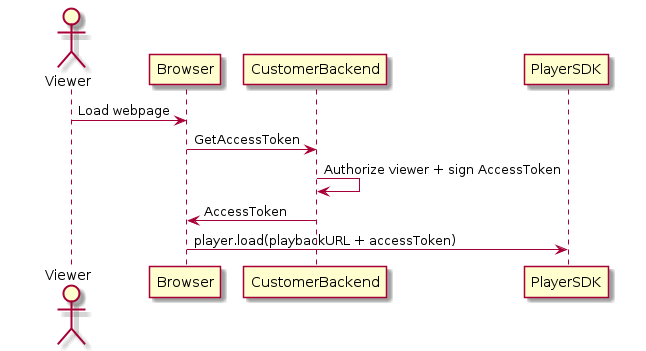Workflow for Private Channels

-
When a viewer tries to load the webpage for a private stream, the browser requests an access token. (The customer provides the browser code to do this.)
-
The customer’s backend app receives the access-token request and determines whether that viewer should be authorized to view the stream. If yes, the backend generates a JWT, uses the customer’s private key to sign it, and returns the signed JWT in a playback request to the browser.
-
The browser loads the stream, using a request to the Amazon IVS player (or other player) SDK. The request contains the stream playback URL and the signed JWT.
-
Amazon IVS uses the customer’s public key to verify that the JWT was signed using the correct private key.
-
If the JWT is verified, Amazon IVS plays the private stream for the viewer.
Customers are responsible for creating:
-
The browser code to request access tokens.
-
The backend server app that generates and signs JWTs.
-
A playback authorization key pair. This has two parts: a public key that AWS retains and a private key that you download. With the private key, you sign the JWTs that authorize access to your private channel.
The method described above — using a network request from the browser to fetch tokens — is not the only way to implement playback authorization. Alternately, customers could send the signed playback tokens in the initial webpage, to reduce the number of network round trips that a viewer needs to make.
In the sections below, we describe how to make a channel private (enable playback authorization), generate and sign playback tokens, and work with playback key pairs.
Note: In the console instructions below, if the left navigation menu is not displaying, you can open it by choosing the hamburger icon in the top left.